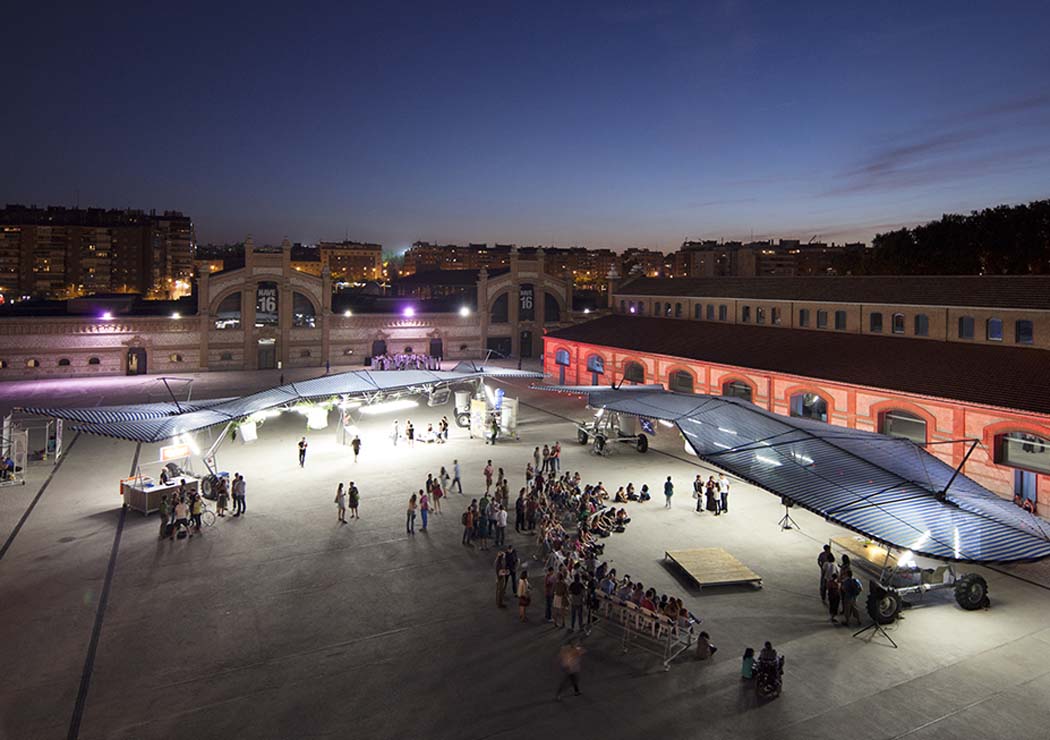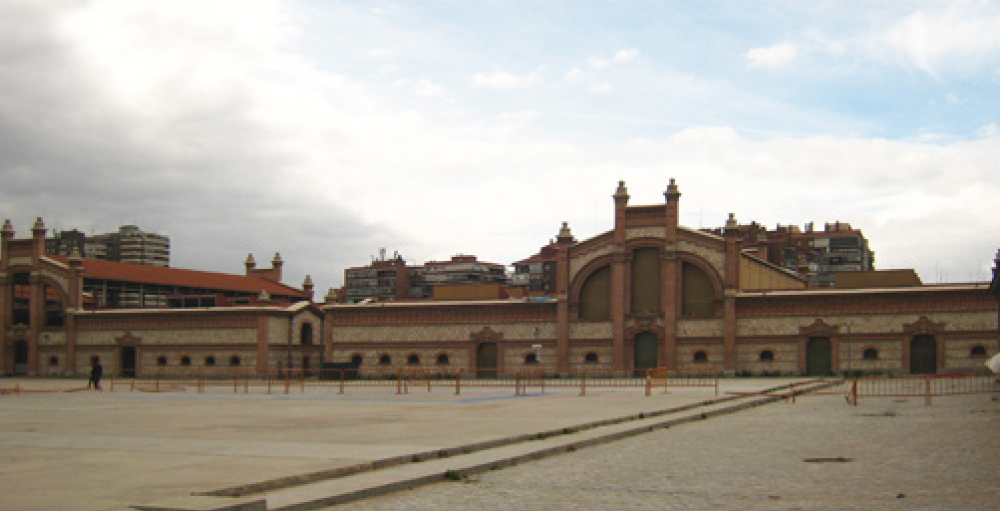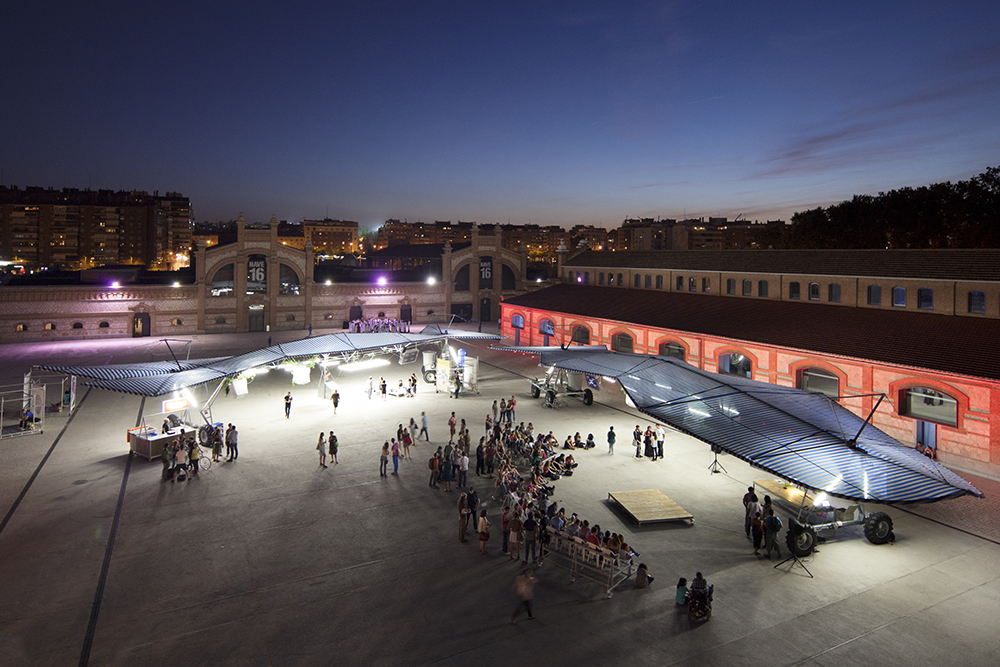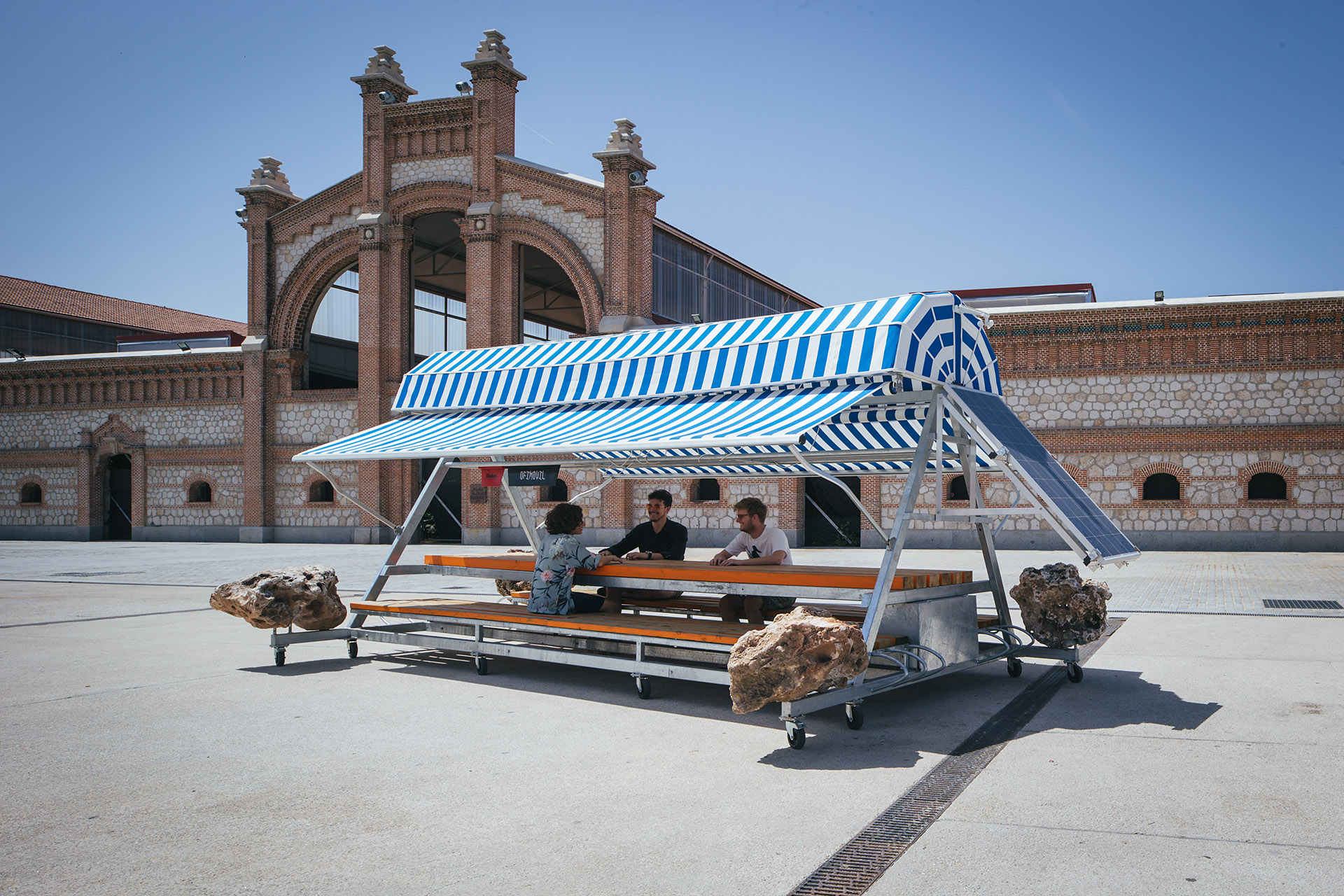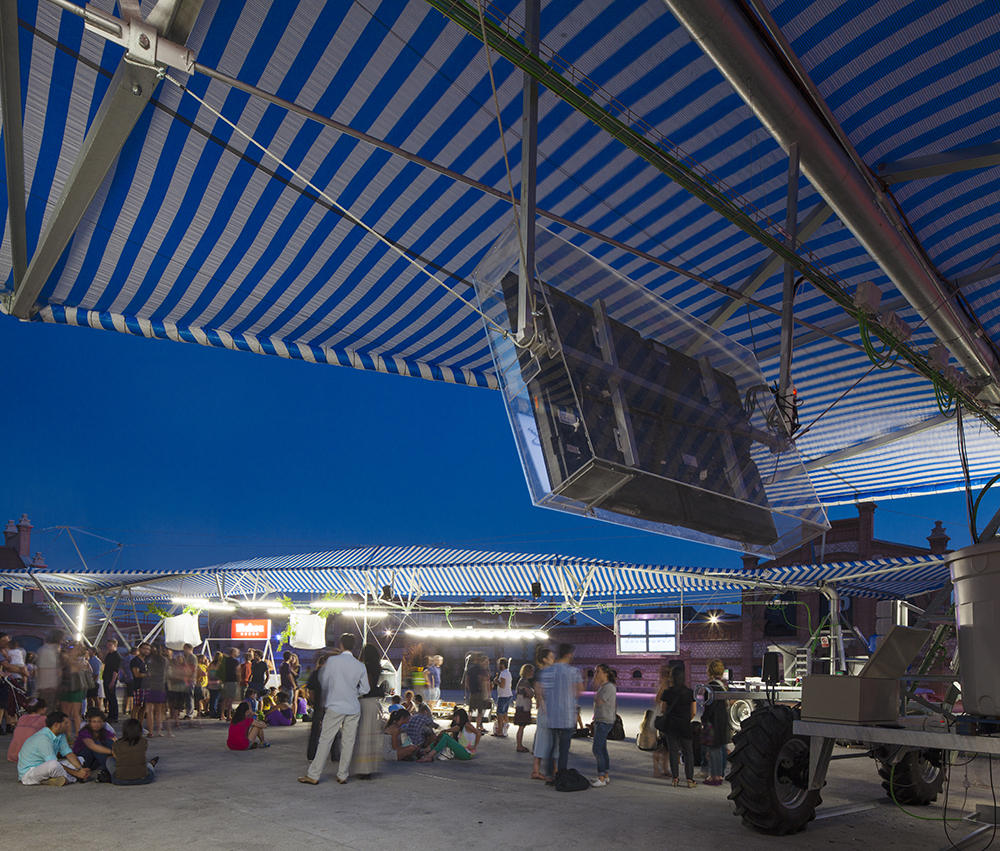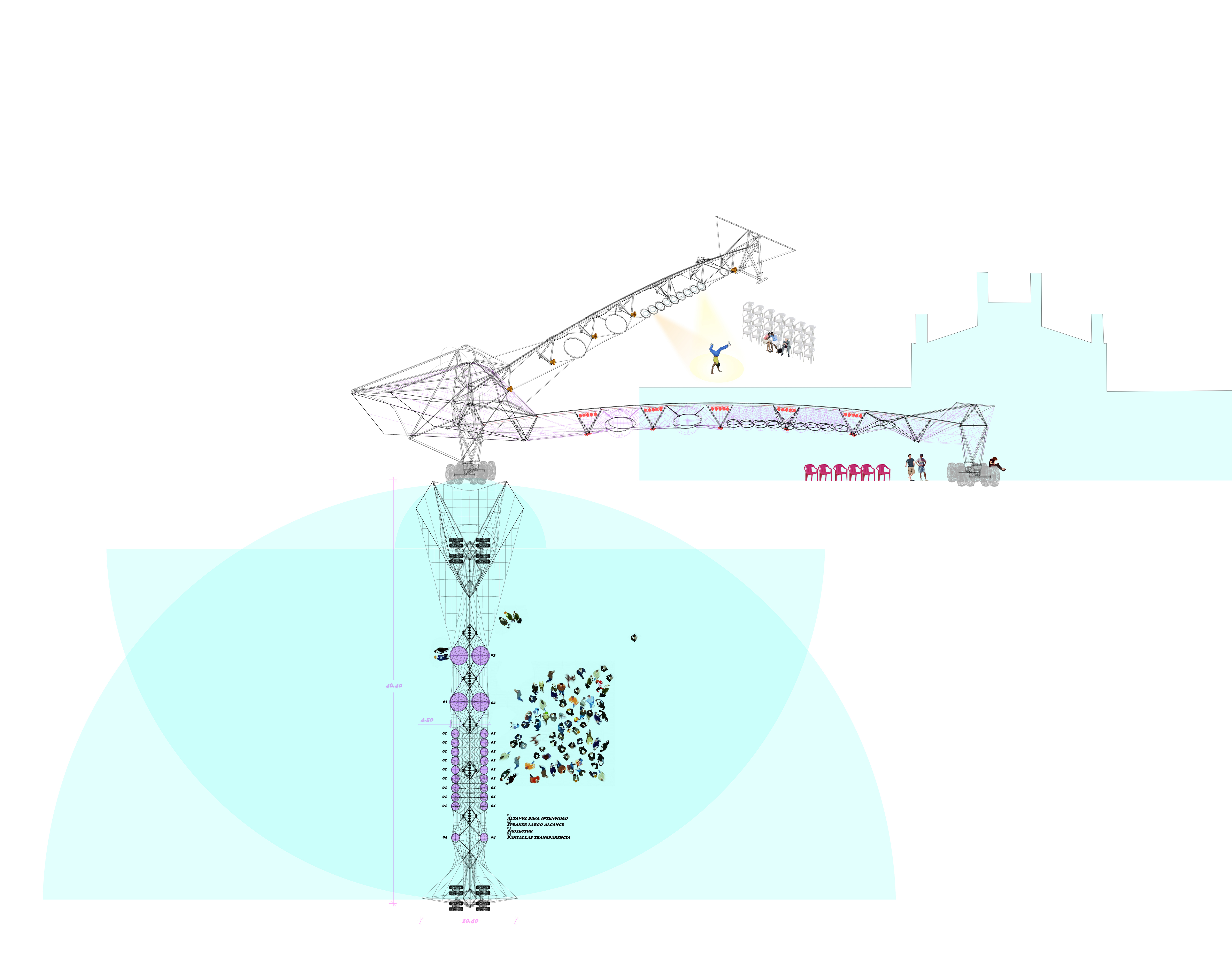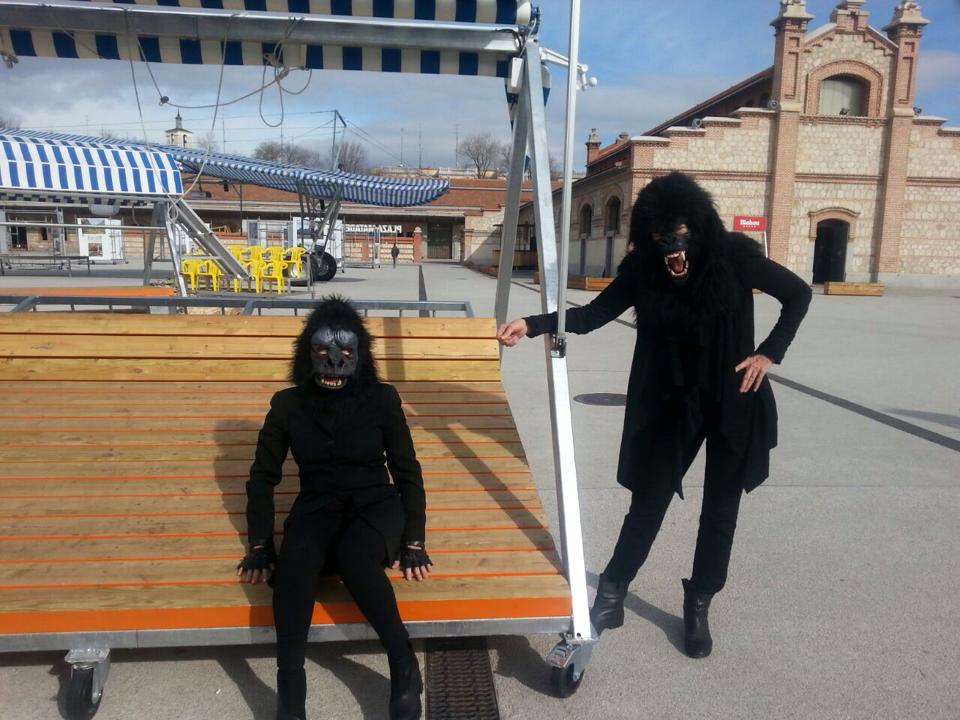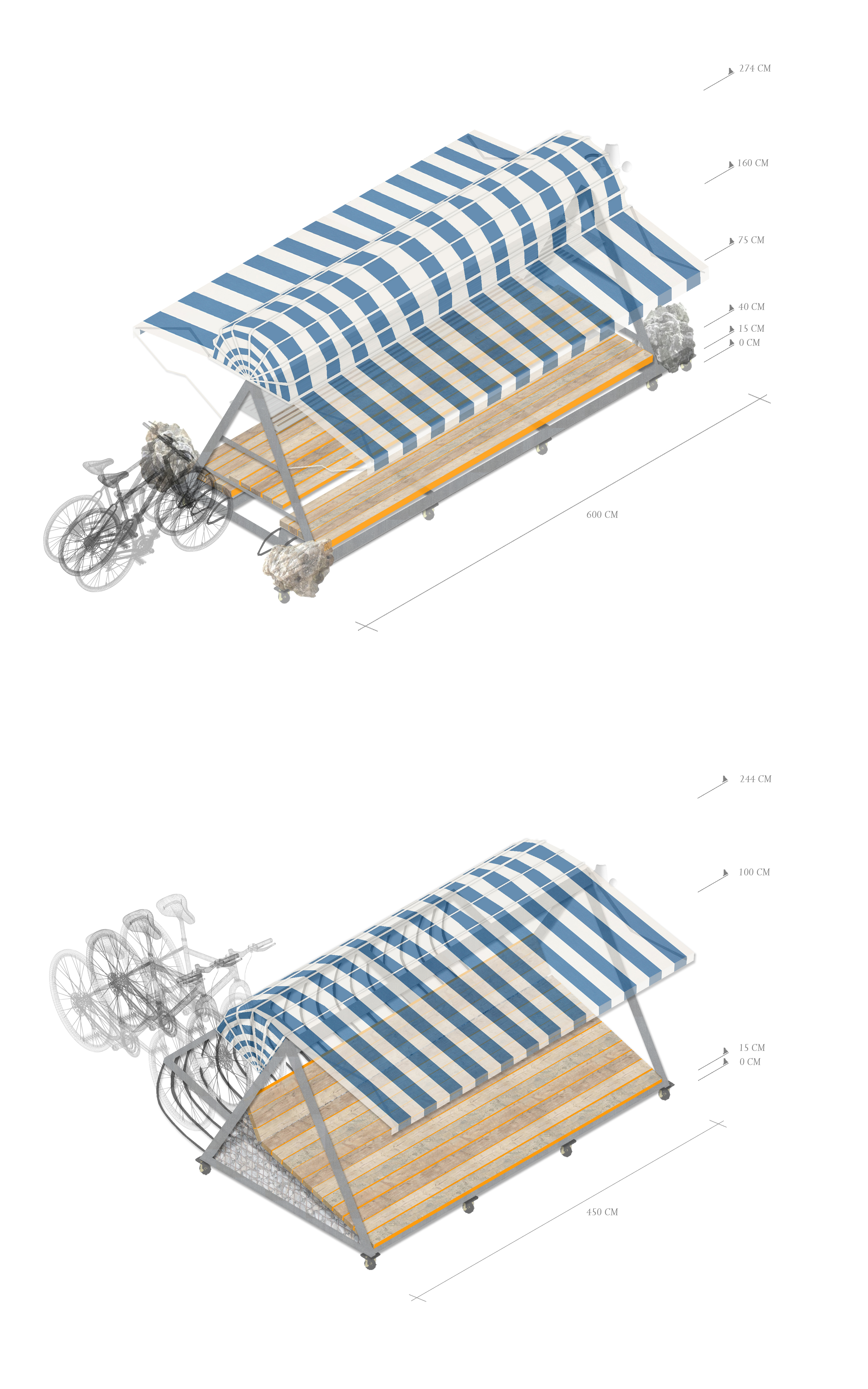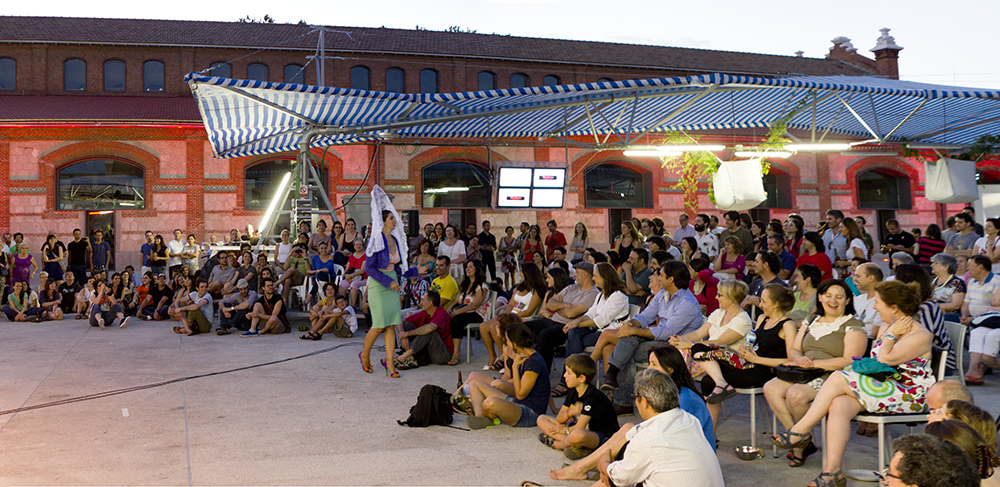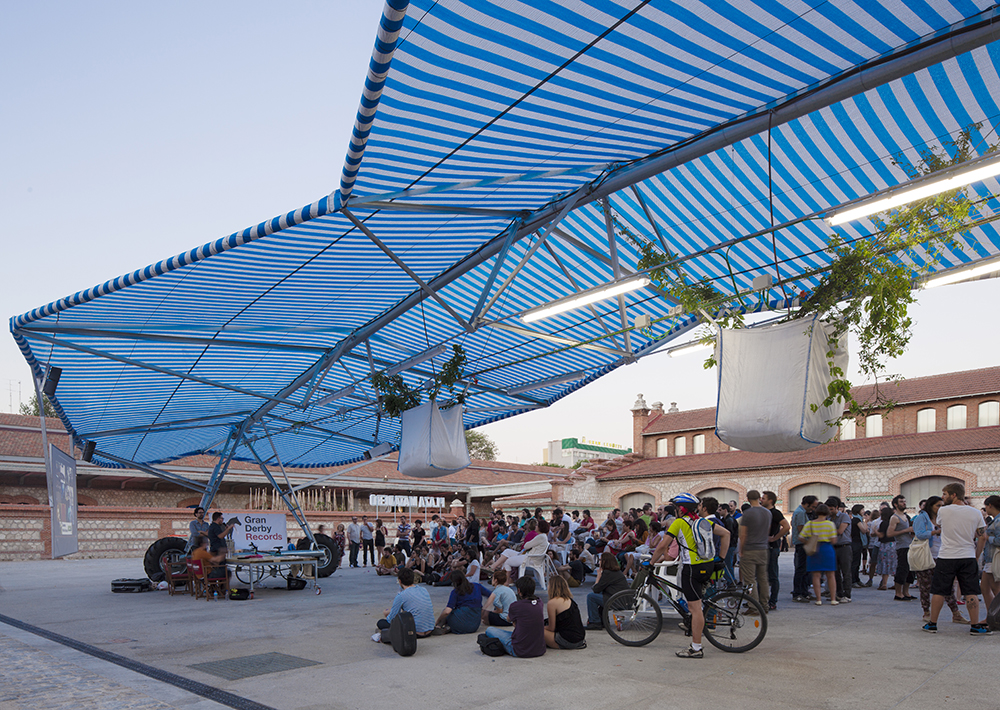Previous state
In the early years of the twentieth century, the Madrid City Council constructed the Legazpi Municipal Slaughterhouse on the bank of the Manzanares River. Covering an area of twelve hectares, the complex of forty-eight Neo-Mudéjar buildings was used for selling and slaughtering livestock. The complex, which is catalogued as a protected industrial heritage site, closed in 1996 and fell into neglect for several years. Eventually, like many other former industrial installations in Europe, it was converted into a municipal cultural centre which opened its doors as such in 2007. Named “Matadero Madrid” it offered a wide range of spaces for temporary exhibitions, design-promotion foundations, research centres, theatres, creative-industry seedbeds, cinematheques, audiovisual libraries and concert halls. Despite this ferment of activity, the vast size of the complex and a certain lack of commitment from the City Hall with regard to its maintenance, made it look empty and neglected. Its many bare courtyards with no shade made evident the lack of public attendance. Paradoxically, the Legazpi neighbourhood has a large proportion of elderly residents needing social interaction as well as lots of families from Latin American and North African countries who would readily make intensive use of the inside spaces.
Aim of the intervention
In 2012, the Madrid City Council called for entries in a competition of ideas for breathing new life and bringing new activities into the courtyards of the Matadero. The prime aim was to attract neighbourhood activity into a facility that was not well ingrained in its surrounds. However, as well as attracting local residents, the idea was also to empower them to take over the spaces as they saw fit. The winning project was designed with a view to bringing domestic activities, usually confined to the private sphere, into public space.
Description
With the name “Escaravox”, the intervention spread a series of mobile devices around the courtyards of the Matadero, thus making it possible to take over the spaces in a great variety of ways. Costing approximately a hundred thousand euros, they were made from recycled industrial products including structures from rural irrigation systems, photovoltaic plaques, supermarket trolleys, synthetic crop covers, rubble sacks and plastic chairs from bars and restaurants, all of them low-cost and easy to maintain. The devices have been given different names in accordance with their use. “Escaravox Lux” and “Escaravox Sonum” are tents forty-two metres long fitted with large pneumatic wheels which make it possible to change their position and orientation. The former is equipped with computers, Internet connection and audiovisual systems for large-screen video projection, while the latter is fitted with lighting systems and sound equipment for shows and concerts. The “Offimobil” is a tent designed for joint projects and has storage spaces, tables for meetings and work, Internet connection, and is powered by from photovoltaic plaques. The “Siestero”, a tent designed for resting, offers protection from sun and rain and places to stretch out where children can have a nap, and old or convalescent people can relax. Finally, a collection of pieces of furniture which are easily adaptable for a variety of uses complements the other devices. They include containers with plastic chairs and multiuse tables which can become part of a platform for a stage, or benches for displaying working plans. Two social agents contracted by the City Hall work as facilitators and organisers of the activities, although most of the devices can be used without any need for official intervention.
Assessment
The power of “Escaravox” for bringing the local residents together is evident in the visitors’ book. Thanks to the installation, the courtyards of the Matadero have received almost a hundred thousand visitors and more than one thousand eight hundred civil society organisations. The capacity of the devices to adapt to the many kinds of user demands is reflected in the great variety of activities programmed, among them working sessions for joint projects, neighbourhood assemblies, operational meetings, political events, conferences and readings, rehearsals and plays, festivities, and sports meetings. All of these activities have taken place without the need for seeking official permits and with very little municipal intervention. Moreover, in contrast with the closed, fussy and affected items that tend to populate public spaces, the objects of “Escaravox” are accessible, playful and appealing, which makes it easier for the local residents to appropriate them. In some ways, the members of the Legazpi community have become hackers of an open-source system with devices that are never finished and continually being tested—like the beta version of a cutting-edge product.
David Bravo
Translation by Julie Wark
[Last update: 29/06/2023]


